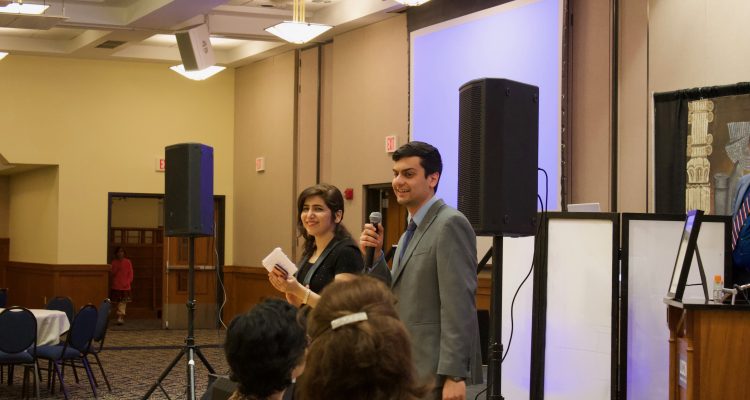Celebrated on the first day of spring, Persian New Year, or Nowruz, fell this year on March 20. One week before, the Iranian Association of UConn (IAU) held its annual Persian New Year Celebration for students and community members alike.
Opening remarks from IAU President Bryan Tassavor welcomed everyone and acknowledge their presence.

“I just want to thank everyone for showing up tonight on this cold March night to celebrate Nowruz, the coming of the new year. I hope the new year brings warmth and togetherness for all, and hopefully you guys get to meet all your Nowruz resolutions,” Tassavor says.
According to members Hanna Ahmaripour and Sara Tavakoli, IAU “tries to promote inclusivity and inform other people about Iranian culture.” There are a few cultural traditions associated with Nowruz such as Charshanbe Suri which is performed on the eve of the new year.
“It’s like, you jump over fire and leaving all the bad stuff from last year and starting a new year. It’s kind of like hoping for good luck and goes along with spring,” says Ahmaripour and Tavakoli of the ritual.
In addition to this, there is also the Haft-Sin: an arrangement of several symbolic items beginning with the letter “seen” in the Persian alphabet. Dr. Reza Kazemi explains the items: sabzeh, samanu, senjed, serkeh, seeb, seer and somaq.
“First is called sabzeh, it means something green. Normally they use wheat, barley or lentils. You soak it in water to grow and create this kind of green…It’s a symbol of happiness and connections. The other thing is samanu. Samanu is not common in this society, but it is a sweet pudding made from wheat. The other thing is senjed. It’s another dry food that I have not seen here, symbolizing love. The other thing is seer or garlic which resembles the health and medicine, in favor of good luck. The other one is apples. We call it seeb; it resembles health and beauty. The other one is somaq that here is kind of berries. Because of its color, it resembles the early morning when the sun rises and a very beautiful color…This resembles the color of sunrise. The other thing we call it serkeh. It resembles the patience and aging, because vinegar takes time to be prepared, and the longer you store it, the better it will be… Therefore, all of these items are in favor of wishing a good health, a good life and a happy life,” Kazemi says.

Students both of Persian ancestry and otherwise celebrated the occasion with dancing, music and food. Kashvi Bhatt, a senior who has never celebrated the Persian New Year herself, came to join and support her friends who do.
“I don’t know many details about Persian New Year, but I grew up with Persian friends, so every year I would go to their New Year events, so I’ve seen their customs and traditions, but I would like to get more knowledge of what exactly is happening and exactly what everything means. I came to support the people I know in Iranian Student Association, and I’ve also come to Nowruz event the past couple years, so it’s kind of a tradition for me also at this point,” Bhatt says.
Junior Gabrielle Sharbin also echoed supporting students of different backgrounds and diverse values and beliefs.
“I just think it’s wonderful for students from different cultures to put on events and showcase their culture to the whole UConn community. I think it’s wonderful that the Iranian Student Association can show the rest of the UConn community how they celebrate their New Year since it’s something most people are unaware of. It’s great that students can come together to learn about other traditions,” Sharbin says.


